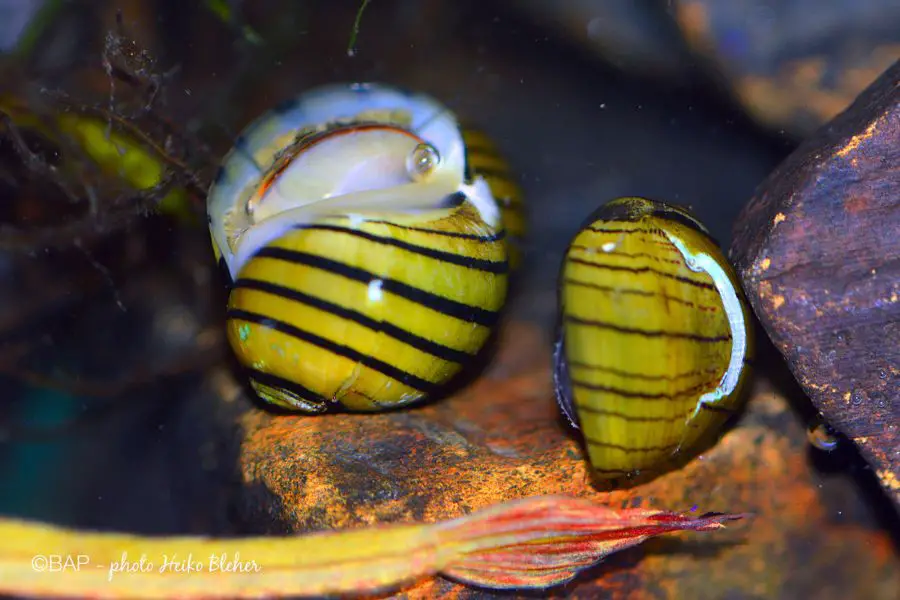This is how to tell if nerite snail eggs are fertile, observe for a subtle pinkish hue on the eggs, which indicates potential fertility. Additionally, gently touch the eggs – if they feel slightly softer, it’s likely they are fertile and on their way to hatching into adorable snail babies.

Being a fish enthusiast comes with its share of mysteries, and one puzzling aspect is discerning the fertility of nerite snail eggs. Are these tiny wonders destined to hatch into adorable snail babies, or are they merely decorative additions to the tank? Join me as I share my experiences and insights into unraveling this intriguing aquarium conundrum.
Understanding Nerite Snail Eggs: The Basics
Jump To
Before diving into the complexities of fertility, let’s establish a foundation by understanding the fundamental characteristics of nerite snail eggs. These small, hard structures adhere to various surfaces within the aquarium, adding an element of curiosity to the underwater landscape.
The Quest for Fertility: Tips and Tricks
The burning question among fish keepers is often, “How can I tell if my nerite snail eggs are fertile?” Fear not, fellow enthusiasts; let’s explore some practical tips that will help decode the mystery of nerite snail egg fertility.
1. The Telltale Tint: A Hint of Pink
When examining nerite snail eggs, keep a sharp eye out for color variations. Fertile eggs often exhibit a subtle pinkish hue, a delicate tint that serves as an unmistakable sign. Discovering this hint of pink is like stumbling upon a secret code, signaling the promise of future snail babies.
2. Texture Test: The Tactile Secret Handshake
Another key to unlocking the fertility puzzle lies in the texture of the eggs. Engage in a gentle touch test – fertile nerite snail eggs typically feel slightly softer than their infertile counterparts. This tactile experience is akin to a secret handshake, establishing a connection between the observer and the potential new additions to the aquatic family.
3. The Waiting Game: Patience as a Virtue
In the realm of nerite snail reproduction, patience is indeed a virtue. The development of these eggs unfolds over time, and astute observers may notice gradual changes in color or texture spanning several weeks. Embrace the waiting game, for the rewards are well worth the anticipation.
Pro Tips for Eggscellent Observations: Lessons from Experience
Enhance your skills in deciphering the fertility status of nerite snail eggs with these additional insights gained through personal trial and error.
1. Multiple Batches, Varied Results
Not every batch of nerite snail eggs will yield fertile offspring. These creatures have specific prerequisites for successful reproduction, and sometimes, they lay eggs for practice. Don’t be discouraged if one batch doesn’t lead to baby snails – it’s all part of the intricate snail parenting game.
2. Ideal Conditions for Reproduction
Creating an environment conducive to nerite snail reproduction increases the likelihood of fertile eggs. Ensure stable water parameters, maintain adequate calcium levels, and provide a well-balanced diet for your snails. Meeting these conditions lays the foundation for successful egg development.
3. Observation Habit: Recognizing Patterns
Make regular observations of your aquarium to familiarize yourself with the typical appearance of nerite snail eggs. This familiarity simplifies the process of spotting subtle changes that may indicate fertility, turning you into an astute observer of the snail parenting journey.
Conclusion: The Delight of Snail Parenting
In conclusion, decoding the fertility of nerite snail eggs is a gratifying journey filled with anticipation and discovery. The subtle pinkish tint and the slightly softer texture act as nature’s clues, inviting you to partake in the miracle of snail reproduction. Exercise patience, observe multiple batches, and gain valuable insights into the nuances of snail parenting.
Embrace the mystery, relish the process, and before you know it, your aquarium might be adorned with the delightful presence of nerite snail babies. Happy snail watching!
Read next: How to Hatch Nerite Snail Eggs : Easy Method
